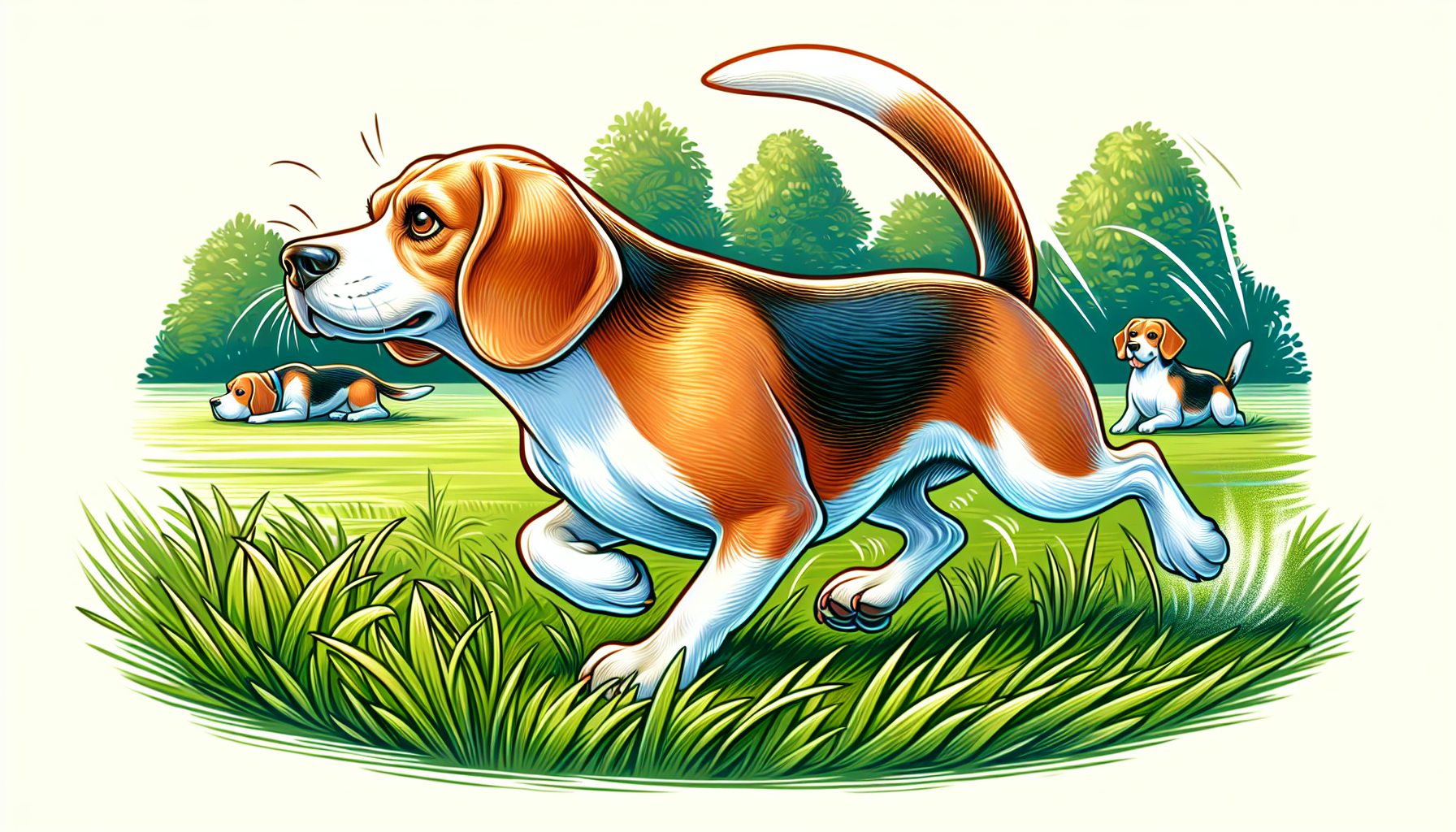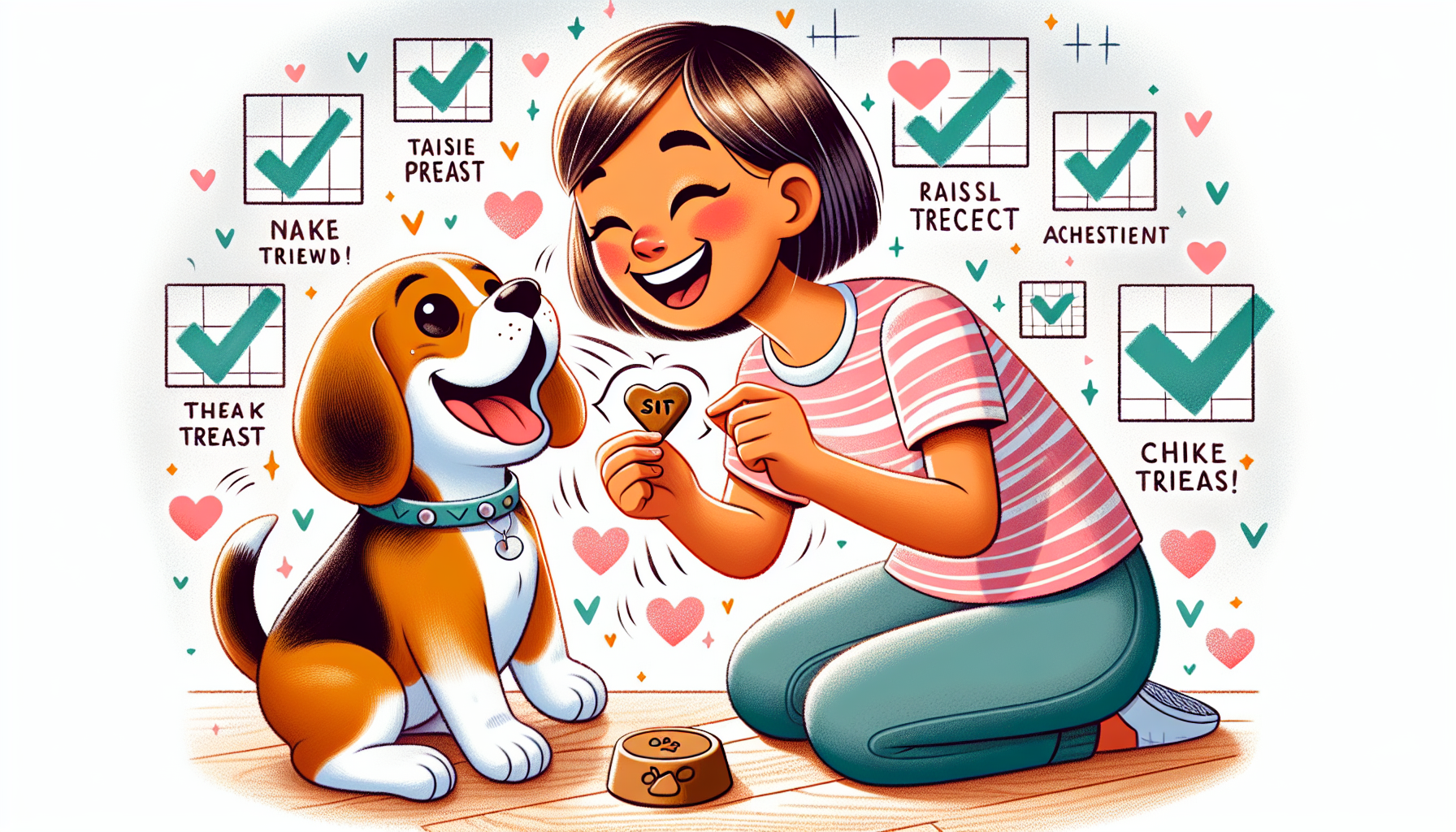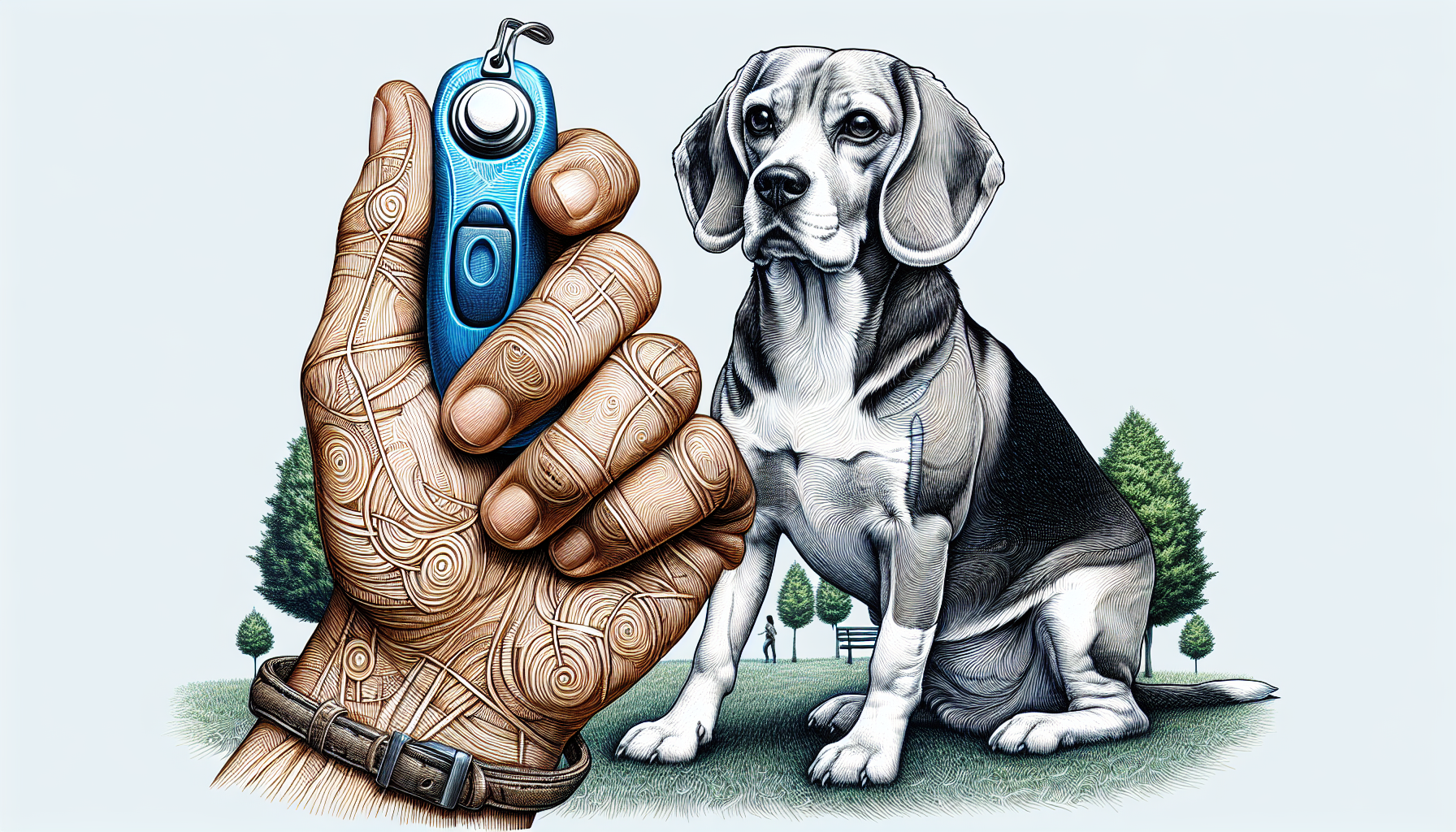If you’re searching for dog training methods for beagles, this article offers the top 5 strategies tailored to their unique traits. We’ll cover understanding beagle behavior, positive reinforcement, clicker training, relationship-building, and avoiding common pitfalls. Discover how to make training enjoyable and effective.
Key Takeaways
- Understanding your Beagle’s behavior is crucial for effective training. They are highly motivated by scent and need plenty of physical activity due to their high energy levels.
- Positive reinforcement is the most effective training method for Beagles. Using rewards like treats, clicker training, and consistent timing helps reinforce good behavior.
- Avoid punishment-based methods as they can harm your relationship with your Beagle. Focus on humane and ethical approaches, and seek professional help for challenging behaviors if necessary.
Find out how to train your beagle to be the well-behaved pup you desire – Read Free Report
Understanding Beagle Behavior

Understanding your Beagle’s behavior traits is a key aspect of effective training. Beagles are renowned for their strong sense of smell, which often drives their curiosity and distracts them during training sessions. This trait is a double-edged sword; while it can make training challenging, it also means that Beagles can be highly motivated by scent-based rewards.
Another key trait of Beagles is their high energy levels. These dogs need plenty of physical activity to stay happy and healthy. Their independent nature can sometimes be mistaken for stubbornness, but with the right approach, this independence can be channeled into positive behaviors. Understanding these traits will help you tailor your training methods to suit your Beagle’s unique personality, setting the stage for success.
#1 – Positive Reinforcement Techniques for Beagles

Endorsed broadly due to its humane, ethical, and highly effective nature, positive reinforcement stands as a popular dog training method. This technique combines classical conditioning with positive reinforcement to create a safe and uplifting experience for Beagles, even for those considered as an alpha dog. The American Veterinary Society of Animal Behavior endorses reward-based methods for training all dogs, and Beagles are no exception.
At its core, positive reinforcement involves reinforcing behaviors with something rewarding, such as food or play. The theory behind this method is simple: dogs repeat good behavior when it’s followed by a reward, and bad behavior does not get a reward or acknowledgment. Consistency and timing are crucial for this method to be effective. Let’s delve into the specifics of reward systems and the importance of consistency and timing.
Reward Systems
Beagles are typically motivated by food rewards rather than praise. This makes them excellent candidates for clicker training, where a food reward is associated with the sound of a clicker. Initially, you’ll need to use treats frequently, but as your Beagle begins to associate the click with the reward, you can gradually reduce the frequency of treats. This approach not only helps in building trust but also strengthens the bond between you and your Beagle.
Positive reinforcement training is key in building a strong relationship during the training process. By consistently rewarding your Beagle for good behavior, you reinforce the idea that good things happen when they follow your commands. This makes training a positive experience for both you and your dog, leading to better long-term results. Some examples of positive reinforcement include:
- Giving treats
- Offering praise and petting
- Using clicker training
- Giving a favorite toy or playtime
Remember to be consistent and patient with your training, and always reward your Beagle for their good behavior.
Consistency and Timing
Consistency in rewards is essential for positive reinforcement to be effective. This means that every time your Beagle performs the desired behavior, they should receive a reward. This regularity helps the dog learn to repeat desired behaviors. Timing is equally important; you need to reward your Beagle immediately after they perform the good behavior to make the connection clear. Capturing rewards for natural behaviors can also encourage your Beagle to repeat those actions.
The effectiveness of positive reinforcement training in promoting good behaviors in dogs stems from a combination of consistent, timely rewards. Ensuring that everyone in the household uses the same commands and reward systems can further enhance this training method’s effectiveness. By maintaining consistency and timing in your training approach, you can help your Beagle learn and retain new behaviors more efficiently.
#2 – Clicker Training for Beagles

As a specific form of positive reinforcement, clicker training employs a handheld device to generate a click sound, which indicates the accomplishment of a desirable behavior. The method is rooted in the principles of operant conditioning. It places significant emphasis on the use of positive reinforcement. The click sound marks the exact moment your Beagle performs the desired behavior and tells them they’ve done the right thing.
Over time, with consistent practice, your Beagle will learn to associate the clicker with rewards and will consistently exhibit the pleasant behavior you’re aiming for. Clicker training can be an excellent tool for improving the timing of praises and rewards, making it a valuable addition to other training methods.
How Clicker Training Works
In clicker training, the dog learns to connect the click sound with a reward, thereby understanding the exact moment of correct behavior execution. Initially, you teach your Beagle to associate the clicker sound with a treat until they expect the reward upon hearing the sound. Operant conditioning, which is the basis of this process, utilizes rewards and punishments to regulate behavior. It is a learning process that has a foundation in this fundamental principle.
Every click must be followed by a reward to establish the association, even if clicked accidentally. Shaping, a technique that gradually rewards a dog for steps toward the desired behavior, can be particularly effective in clicker training. This method can be used to improve the timing of praises and rewards, making it a useful addition to other training methods.
Implementing Clicker Training
To start clicker training, follow these steps:
- Begin in a quiet area with your Beagle’s favorite reward.
- Click and reward immediately to build the association.
- Keep training sessions short, about five minutes, to maintain your Beagle’s attention.
- Use the clicker to mark the exact moment your Beagle performs the desired behavior.
- Immediately reward with a treat.
Luring involves using something the dog wants, like food, to guide them to perform the desired action. As your Beagle reliably performs the behavior with the lure, you can add a command word and continue clicking and rewarding them for following the command. This structured approach helps your Beagle understand and respond to training cues more effectively.
#3 – Relationship-Based Training for Beagles

Concentrating on fulfilling the needs of the dog and the owner, relationship-based training aims to forge a strong bond and adopt a personalized approach. This method emphasizes:
- Understanding what motivates your Beagle
- Ensuring their basic needs are met
- Interpreting your Beagle’s body language to improve communication and strengthen your connection.
This training method is not just about teaching commands but about building a relationship where your Beagle feels valued and understood. Building a strong bond and tailoring training approaches to individual dogs are crucial aspects of this method.
Building a Strong Bond
A strong bond between you and your Beagle can facilitate better communication and understanding during training sessions. Beagles, being pack animals, highly value companionship and are more receptive to training when they feel connected to their owners. Positive reinforcement training helps build this bond by rewarding good behavior, making training a positive experience for your Beagle.
By consistently rewarding your Beagle for good behavior, you reinforce the idea that good things happen when they follow your commands. This makes training a positive experience for both you and your dog, leading to better long-term results.
Tailoring Training to Individual Dogs
Each Beagle is unique, and tailoring training strategies to individual dogs is essential for success. Some Beagles may require more patience and time to build confidence, while others excel when given new challenges to learn or work through. Using specific motivators that appeal to each dog’s unique preferences can make training more effective.
Consider your Beagle’s personality and history when combining training methods. Confident dogs might respond well to clicker training, while anxious dogs may benefit more from positive reinforcement. By customizing your approach, you can address your Beagle’s specific needs and behaviors more effectively.
#4 – Avoiding Common Pitfalls
Training a Beagle presents challenges, and sidestepping common pitfalls is paramount to ensuring success. Punishment-based methods, which were once popular, can damage the relationship between you and your dog and lead to more unwanted behaviors. Electronic training, which relies on an electric collar for correction, can cause unnecessary pain, stress, and anxiety in dogs. These methods are not recommended and should be avoided.
Instead, focus on humane and ethical approaches that consider your Beagle’s emotions. Let’s discuss why punishment-based methods are harmful and how to overcome Beagle stubbornness without resorting to punishment.
Punishment-Based Methods
Punishment-based methods, such as using an electric collar to deliver a shock when a dog is not performing the desired tasks, can be harmful and lead to psychological harm. The misuse of electronic collars can confuse and unfairly punish dogs. Training methods should focus on the dog’s emotions, prioritizing humane and ethical approaches.
In recent years, popular dog training methods that rely on punishment and dominance have fallen out of favor in the professional dog training community, as they can damage the dog-owner relationship and increase unwanted behaviors. Science based dog training, such as positive reinforcement techniques and other humane training approaches, are more effective and ethical alternatives.
Overcoming Stubbornness
Beagles can be stubborn, but this trait can be managed with the right approach. Proper socialization for Beagles is crucial, it helps them become well-mannered around other dogs and people. Experienced trainers can differentiate between a dog’s confusion and refusal, avoiding unnecessary corrections.
By understanding the root cause of your Beagle’s behavior, whether it’s confusion or stubbornness, you can address it more effectively. Patience and consistency are key in overcoming stubbornness without resorting to punishment.
#5 – When to Seek Professional Help
Occasionally, even with the best of efforts, dog owners may find that certain behavior issues necessitate professional assistance. Behaviors such as excessive barking, digging, or chewing might indicate it’s time to consult a professional. Professional help should also be sought for issues like resource guarding, separation anxiety, or aggression.
By monitoring your Beagle’s behavior and seeking help when needed, you can prevent minor issues from escalating into major problems. Let’s discuss how to recognize challenging behaviors and choose an accredited dog trainer.
Recognizing Challenging Behaviors
Certain behaviors are clear indicators that professional help may be needed. Behaviors like escaping, running away, or showing fearfulness suggest that your Beagle might require professional training. Handling issues and phobias in dogs are signs that indicate the need for a behaviorist.
Leash reactivity, characterized by lunging and barking while on a leash, is another sign that a dog might need professional help. Nipping or biting, especially if it escalates to aggression in beagles, also indicates a need for professional assistance. Recognizing these behaviors early can help address them more effectively as dogs learn.
Choosing an Accredited Dog Trainer
When choosing a dog trainer, understanding their methodology is a great first step. Certifications like Certified Professional Dog Trainers (CPDT) or Applied Animal Behaviorists indicate a trainer’s qualifications and expertise. Enrolling in a dog training class led by a CPDT ensures they must pass a standardized test and maintain continuing education credits, keeping them updated on best practices.
Applied Animal Behaviorists have advanced degrees and supervised training in animal behavior, making them well-equipped to handle complex behavior issues. By selecting an accredited trainer, you can ensure your Beagle receives the best possible training.
Combining Training Methods

Blending different dog training methods often yields the best results for a breed as unique as the Beagle. Combining positive reinforcement and clicker training with relationship-based techniques can effectively address a range of behaviors. For instance, using clicker training to mark precise actions and positive reinforcement to reward them enhances the learning process. This combination is particularly useful if one method alone isn’t sufficient.
An innovative addition to this approach is the “Brain Training for Dogs” program, which uses engaging puzzles and exercises to boost your Beagle’s brainpower. Rooted in the science of neuroplasticity, this program strengthens cognitive and physical skills while deepening the bond between you and your dog. Designed by certified trainer Adrienne Farricelli, it offers a practical, enjoyable way to enhance your Beagle’s obedience and overall behavior.
Avoid punishment-based methods, as they can damage your relationship with your Beagle and lead to unwanted behaviors. Instead, focus on humane and ethical approaches. By combining and customizing these methods, you can achieve the best outcomes for your Beagle.
Summary
Training a Beagle requires understanding their unique behavior traits and using effective beagle training methods like positive reinforcement, clicker training, and relationship-based training. Avoiding common pitfalls, such as punishment-based methods, ensures that the training process is humane and effective. Recognizing when to seek professional help can also be crucial in addressing specific behavior issues.
By blending different training methods and tailoring your approach to your Beagle’s individual needs, you can build a strong, positive relationship with your dog and help them become well-behaved and happy. Remember, patience and consistency are key. With the right training techniques, your Beagle can learn and thrive, making your bond even stronger.
Frequently Asked Questions
Why are Beagles considered stubborn during training?
Beagles are considered stubborn during training because of their independent nature. Using positive reinforcement methods and understanding their behavior can help in managing this.
What makes positive reinforcement effective for Beagles?
Positive reinforcement is effective for Beagles because it rewards good behavior with something the dog finds rewarding, such as food or play, and helps build a strong bond between the dog and the owner. This method is humane and encourages desirable behavior.
How does clicker training work?
Clicker training works by using a handheld device to create a click sound that signals when a desirable behavior is completed. This click marks the exact moment of the behavior, and a reward follows to reinforce it.
When should I seek professional help for my Beagle's behavior?
You should seek professional help for your Beagle's behavior if you notice specific issues like resource guarding, separation anxiety, or aggression. This can prevent minor problems from becoming more serious.
Can I combine different training methods for my Beagle?
Yes, combining different training methods for your Beagle, such as positive reinforcement and clicker training, can lead to better results and ensure a humane and effective approach.
Learn how to train your beagle to be the well-behaved dog you desire –> Access our Free Report
Shop for beagle-themed products and gifts that beagle enthusiasts will love.

